When it’s too Hot to Mow Your Lawn!
A healthy lawn provides you and your family with a green, lush and welcoming environment. However, when temperatures rise and the harsh summer sun beats down on your lawn, the ...

While thatch is a necessary, natural and beneficial part of all lawns, it becomes a real problem when it increases to excessive amounts. This then has many detrimental effects on the lawn and must be dealt with effectively to remove the problem.
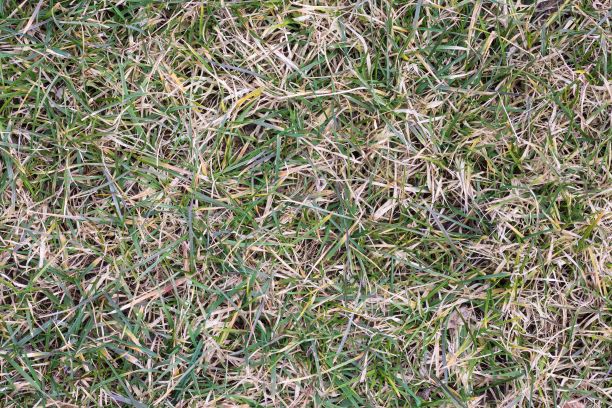 Thatch is a layer of dead plant material that forms between the soil surface, and the green leaves of your lawn. It can accumulate over time, giving your lawn a spongy feel when you walk on it.
Thatch is a layer of dead plant material that forms between the soil surface, and the green leaves of your lawn. It can accumulate over time, giving your lawn a spongy feel when you walk on it.
The formation of thatch, which can be a combination of dead leaves and stems, as well as excess root growth, is perfectly normal. Some lawn varieties are more prone to thatch than others, but in a healthy, vigorous lawn, thatch will naturally break down, and not cause a problem.
However, in older lawns, the thatch can accumulate, impacting the look and feel of your lawn, and making it more prone to issues such as waterlogging or being at risk of fungal diseases.
You should aim to dethatch your lawn every Spring.
Dethatching your grass is important for maintenance and the ongoing health of your lawn. Left untreated, lawn thatch can give rise to a range of more complex problems that can harm your lawn and leave you with an unsightly backyard.
Dethatching involves breaking through the layer of organic matter at the soil surface and improving grass health by allowing air and nutrients to make their way into the soil to feed your lawn.
The added benefit of this is that dethatching allows better water penetration, which means your lawn will not only receive the hydration it needs to thrive, but it will also prevent waterlogging, which can give rise to unwanted pests, weeds and fungal diseases that thrive in moist, damp environments.
The result is a much healthier, better-looking lawn.
So how do you know when to dethatch?
Dethatching should only be performed on warm-season grasses, such as Buffalo, Kikuyu, Couch and Zoysia. Cool-season varieties do not respond well to dethatching, and they may cause permanent damage to your lawn.
The best time to dethatch is in late spring, or early summer when the conditions allow for rapid recovery. Avoid dethatching through the warmest part of summer, in order to give your lawn the best chances of bouncing back to good health.
Also, avoid dethatching a new lawn before it has endured its first summer, as it needs to develop a strong root system to survive the heat.
There are several methods used to dethatch lawns and with a little understanding of each process – you should be able to choose the method best suited to your own lawn
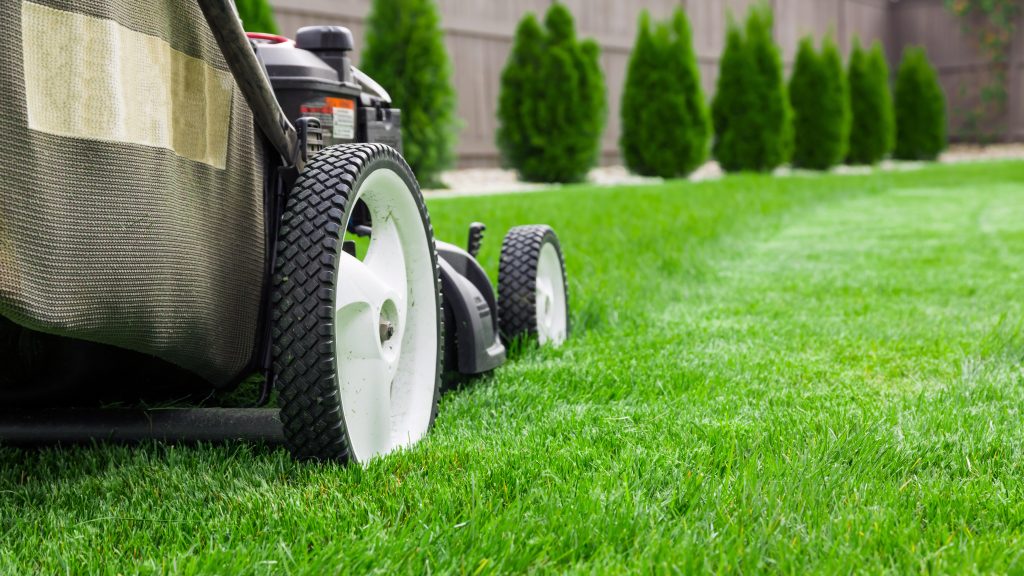 This method of detaching is best suited only for warm-season grasses which have runners. Therefore, cutting your lawn low is most suitable for the grasses which have underground runners called rhizomes. This includes lawns such as Couch which can easily repair from the low cutting process.
This method of detaching is best suited only for warm-season grasses which have runners. Therefore, cutting your lawn low is most suitable for the grasses which have underground runners called rhizomes. This includes lawns such as Couch which can easily repair from the low cutting process.
Low cutting involves mowing at a very low height to remove the entire thatch layer. This can be done with one single mow or may more easily be done with several passes being used – each time lowering the mowing height until all the thatch is removed.
The method can be very slow and dirty and will produce an enormous amount of waste matter which must be considered and planned for before work begins.
Overall, low cutting has no benefits over Vertimowing and is not suitable for cool-season grasses. For lawns mowed with a Cylinder Lawn Mower, a far greater result will be gained from Vertimowing.
Vertimowing or dethatching is the method of using a specialised mower to remove the buildup of thatch on your lawn.
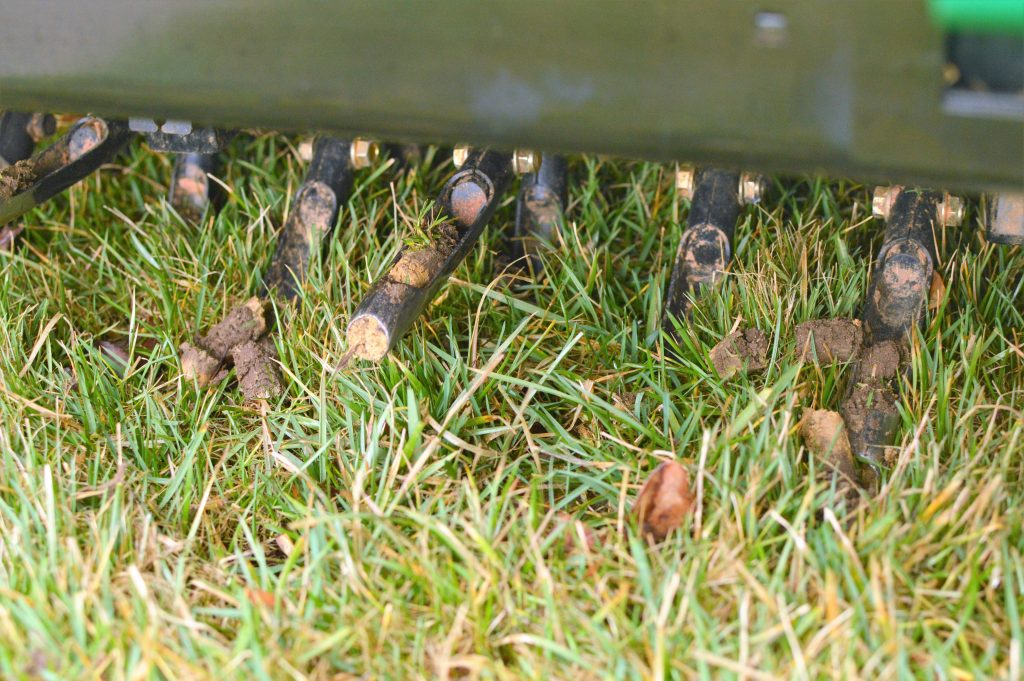 Lawn coring is done with a lawn coring machine which is pushed over a lawn’s surface and punches out plugs of soil, thatch and grass, leaving hundreds or thousands of holes in the surface.
Lawn coring is done with a lawn coring machine which is pushed over a lawn’s surface and punches out plugs of soil, thatch and grass, leaving hundreds or thousands of holes in the surface.
Lawn coring is primarily done for the purpose of increasing drainage and aeration of the lawn’s soil.
However, lawn coring also has the added benefit of removing some of the thatch layers of the lawn. This method should only be used as a supplemental process of dethatching, as it is not overly effective, and will have little effect on heavily thatched lawns.
The best use for lawn coring, as a method of dethatching, is for cool-season grasses which have no runners to regenerate from and which make them unsuitable for other dethatching methods.
Cool-season grasses will benefit greatly from lawn coring on a yearly basis, which will routinely aerate the soil as well as regularly remove and control thatch.
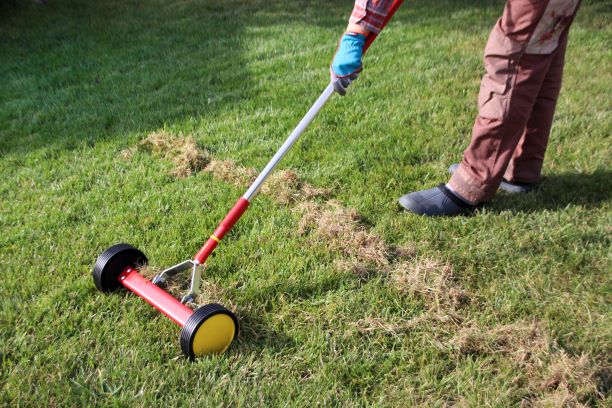 Vertimowing really is the best method of dethatching. It involves using a specialised machine over the lawn’s surface to remove the entire thatch layer, including most of the lawn.
Vertimowing really is the best method of dethatching. It involves using a specialised machine over the lawn’s surface to remove the entire thatch layer, including most of the lawn.
The lawn is then left to regenerate from its above ground and below ground runners.
Apart from being the overall best method of dethatching, Vertimowing is really the only method that should be considered when your lawns are mowed with Cylinder Lawn Mowers. This is because it removes the most amount of thatch, and slightly levels the soil surface – both factors which will benefit the process of Cylinder Lawn Mowing.
The process of Vertimowing is a very dirty job that is highly laborious and produces a lot of waste material. For these reasons, it really is best to hire a professional contractor to do the work and to be assured the work is done properly and in a single session.
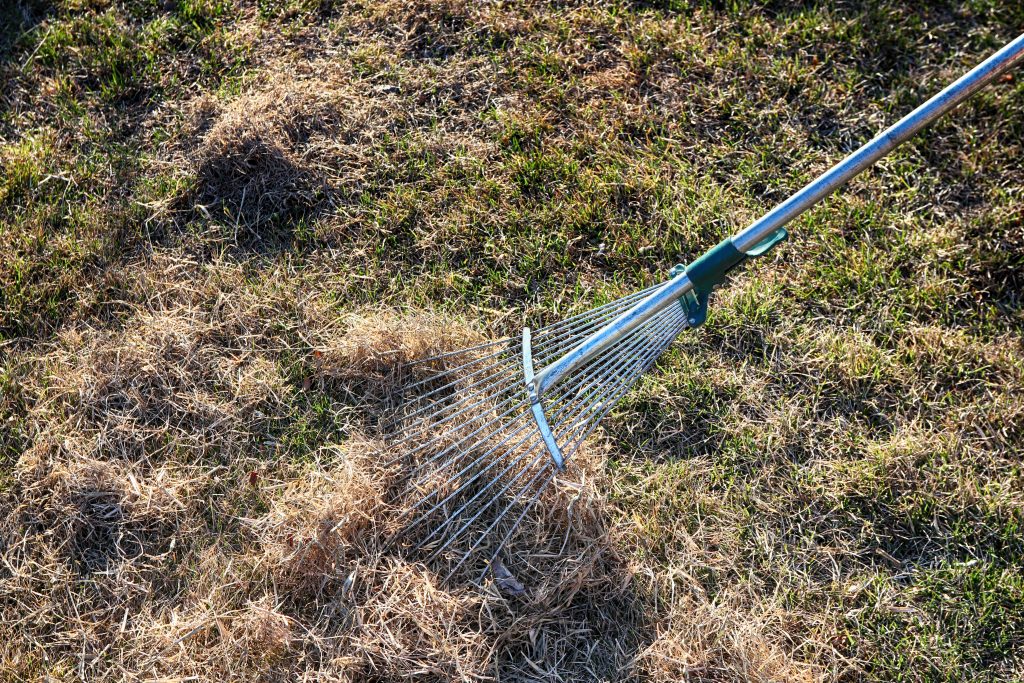 If your thatch isn’t completely out of hand – say only 1cm deep and limited to a small space – a dethatching rake may be sufficient to remove the thatch.
If your thatch isn’t completely out of hand – say only 1cm deep and limited to a small space – a dethatching rake may be sufficient to remove the thatch.
A dethatching rake features a double-sided rake head and can be used to pull up the dead organic material.
Dethatching rakes are particularly effective for removing dead leaf material in Buffalo, Kikuyu and Couch lawns.
You should always remove dead vegetative material after dethatching. Not only will you get rid of unsightly dead plant material, but it allows water and fertiliser to penetrate deep into your soils for a healthier lawn.
As long as your Kikuyu grass doesn’t get as thin as 12mm then you will have no trouble dethatching your lawn.
Any of the dethatching methods mentioned above can be used to dethatch your Kikuyu lawn.
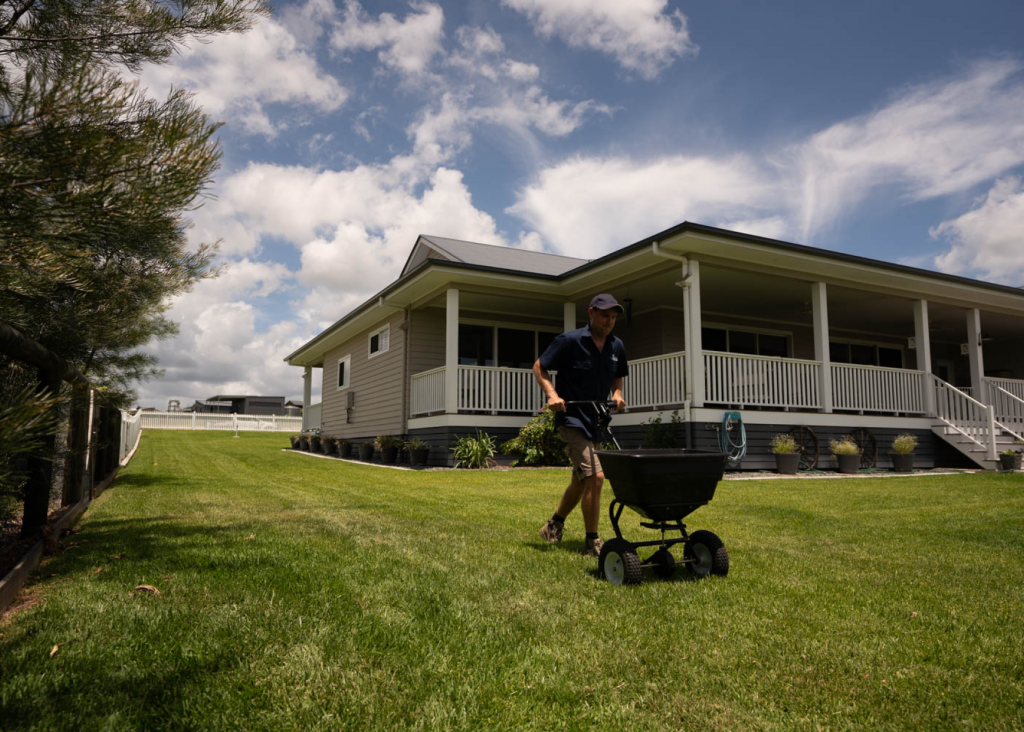 Once you’ve given your lawn a dethatching makeover, it’s time to do some maintenance.
Once you’ve given your lawn a dethatching makeover, it’s time to do some maintenance.
Feed your lawn with a good quality fertiliser suited for your lawn variety and conditions immediately after dethatching to provide much-needed nourishment.
You also should water your lawn deeply, allowing the water to soak through to the roots. If the water is pooling at the surface, or appears to be running off, use a wetting agent to allow it to enter the soil. Aim for long, deep watering over frequent, short bursts of hydration for your lawn.
As part of your regular lawn maintenance, maintain suitable soil pH levels – your lawn should be as close to neutral as possible (between 6.5 – 7) – to ensure that you get the most out of your fertiliser program.

LawnPride Hydramax 2L Hose-On is designed to provide excellent water retention and penetration.
SHOP NOW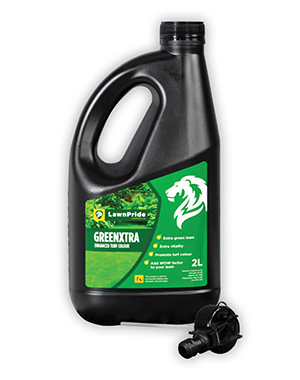
LawnPride GreenXtra 2L Hose On is a liquid fertiliser that provides extra lawn green-up without excessive growth.
SHOP NOWThatch is beneficial for your lawns… unless it gets out of control. Excessive thatch (greater than 7.5cm) can lead to poor lawn health due to poor nutrition, lack of water and sunshine, and susceptibility to pests and disease.
Ultimately, aim to dethatch your lawn every spring, using one of a variety of methods, to bring your lawn back to peak condition.
To maintain a healthy, vibrant lawn, browse our range of leading maintenance products at myhomeTURF’s online store.